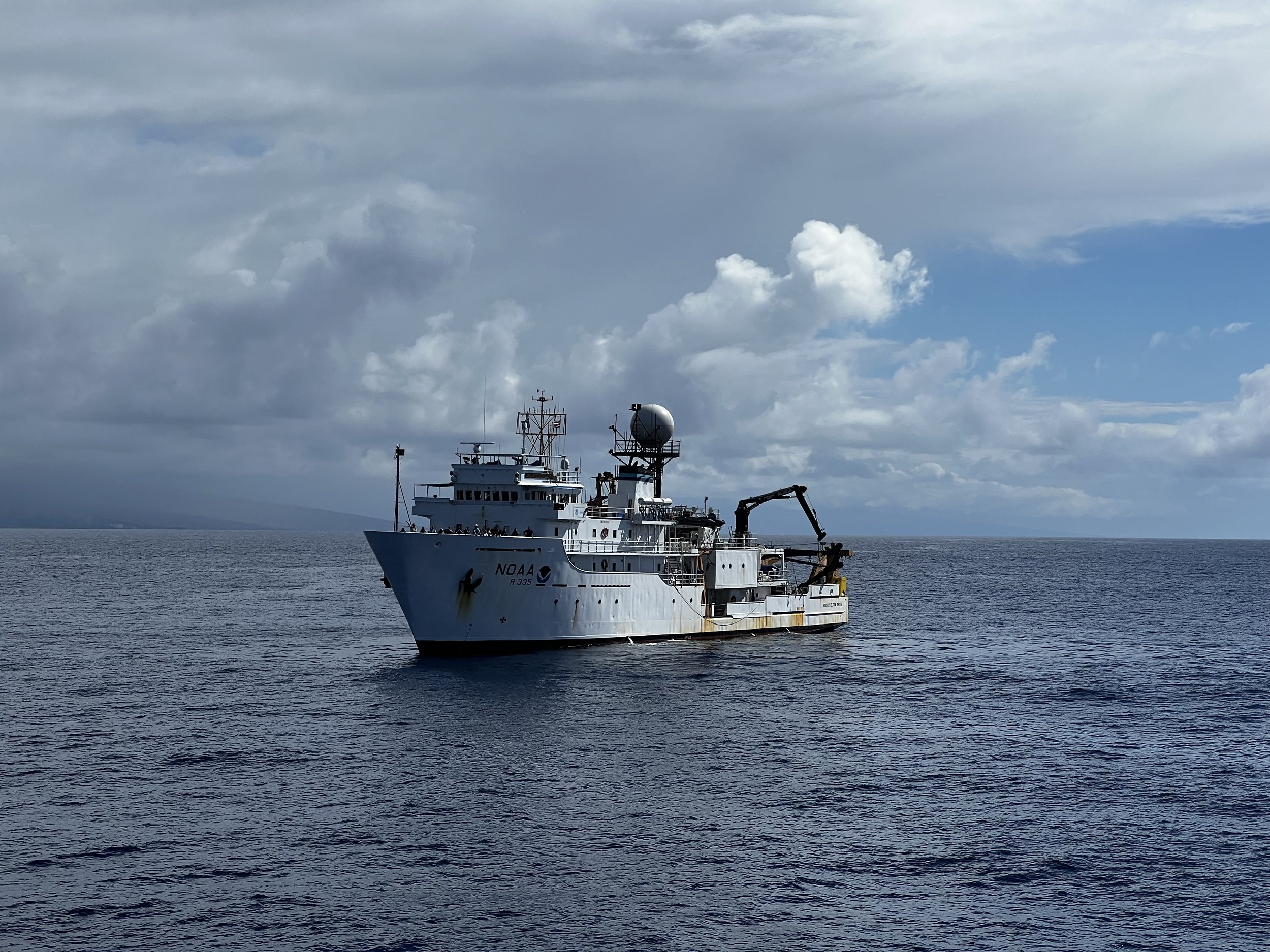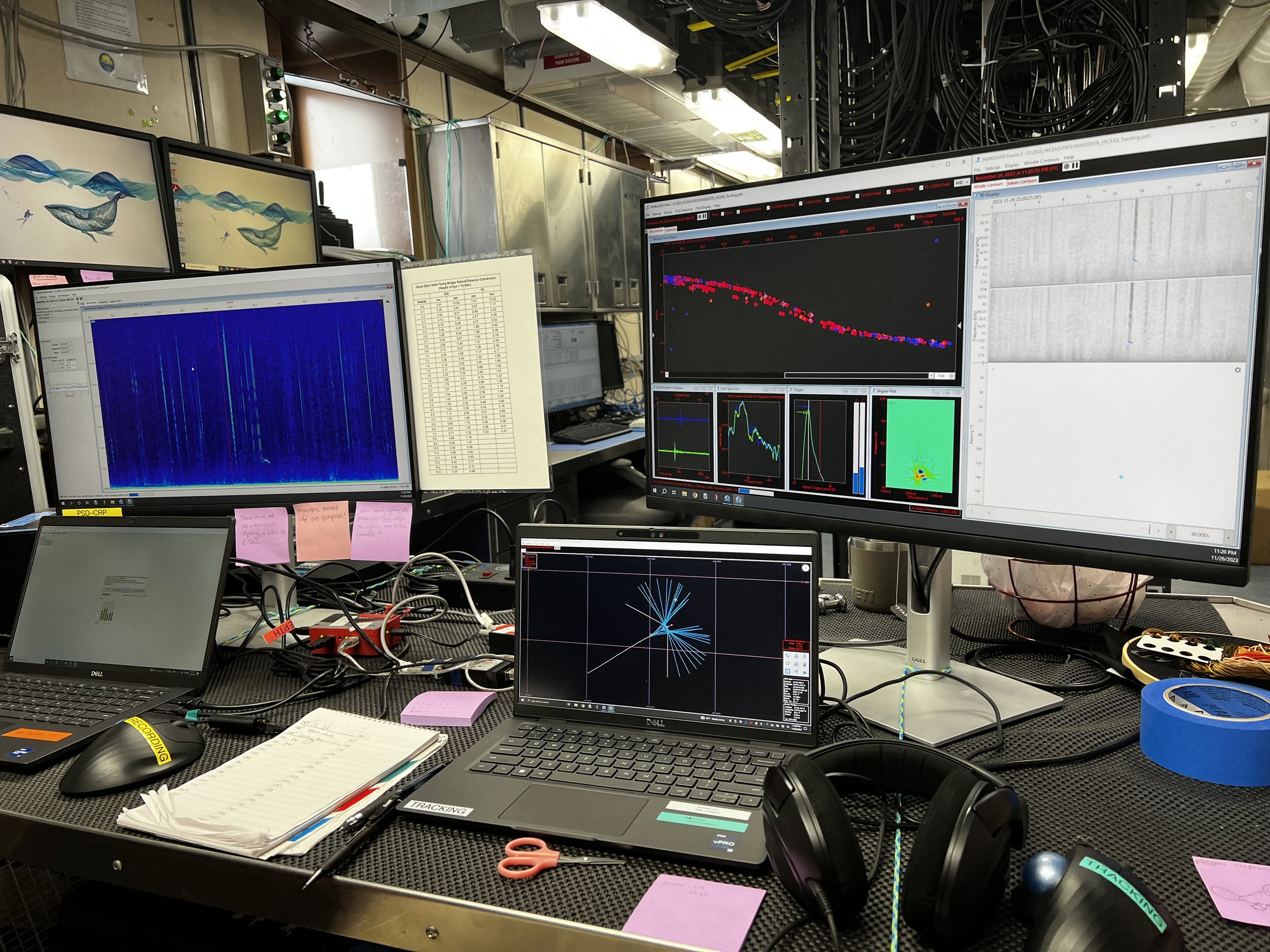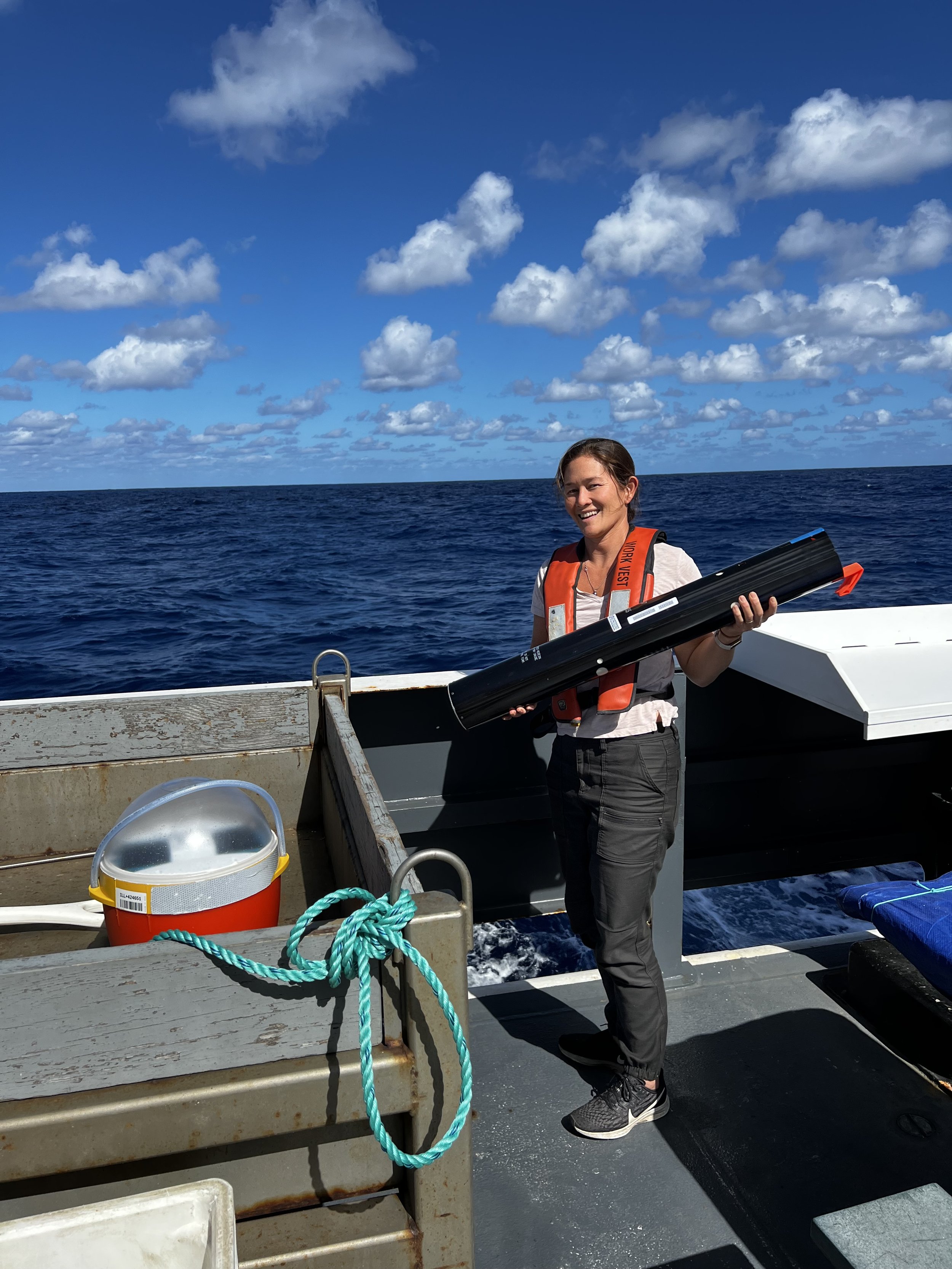/ hawaiian islands
In fall 2023, I worked as an acoustician on large-scale ecosystem survey led by the NOAA Pacific Islands and Southwest Fisheries Science Center called the Hawaiian Islands Cetacean and Ecosystem Survey (HICEAS, pronounced “Hi-sees”). The primary goal of HICEAS is to assess the abundance and habitat of whale, dolphin, and seabird populations across the Hawaiian Islands with special interest in protected species. While I only served on one leg lasting ~4 weeks, the entire survey took place over 6 months from July through December 2023.
Our team of three acousticians conducted passive acoustic monitoring aboard NOAA Ship Reuben Lasker using towed hydrophone arrays and drifting recorders to detect and track animals in coordination with the visual observer team. Each day, we listened to underwater sounds in real-time and heard sounds produced by a variety of animals, including loud sperm whale clicks, humpback whale songs, and dolphin whistles.
To learn more, check out the HICEAS 2023 story map HERE!
Photos and videos taken under NOAA Permit 25745
/ alaska
I have spent three boreal summers in Alaska, the first working for Prince William Sound Science Center (PWSSC) as a field technician, the second for Silver Bay Seafoods as a cook and deckhand on a commercial fishing tender, and the final for The Native Village of Eyak as a field technician.
As a field tech my first summer, I was part of PWSSC’s Hatchery-Wild program, a 7-year project that is studying the interactions and impacts between hatchery and wild salmon—namely pink and chum—in Prince William Sound (PWS). In a four-person crew, we worked around the clock conducting stream surveys, sampling spawned-out salmon carcasses for otolith and DNA tissues, and recording specimen measurements.
After my first summer in AK collecting data for scientific objectives, the subsequent summer I intentionally sought a position in commercial fishing to experience a perspective outside of science but within the same ecosystem. Consequently, I observed the PWS Pacific salmon fishery from two disparate perspectives of scientific research and commercial fishing. Aboard F/V Determined (110’), a tender that packs 420,000 lbs of fish, I was the only woman in a four-person crew that unloaded fish from purse-seining fishing vessels and later offloaded to the Silver Bay Seafoods cannery.
For the third season in a row I returned to Alaska, but this time I worked as a field tech in a remote field camp called Baird on the Copper River. As a crew of five working for the Native Village of Eyak, we built, maintained, and disassembled two fish wheels that we used to collect and PIT tag chinook salmon for a mark-recapture study.
/ british columbia
In August 2019, I worked on a project for the University of Victoria, British Columbia in collaboration with Max Planck Institute and Fisheries and Oceans Canada to record vocalizations of Southern and Northern Resident killer whales. Recordings were made using a 21-hydrophone array on a 22’ RHIB in waters surrounding Vancouver Island.

































